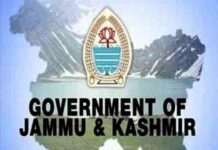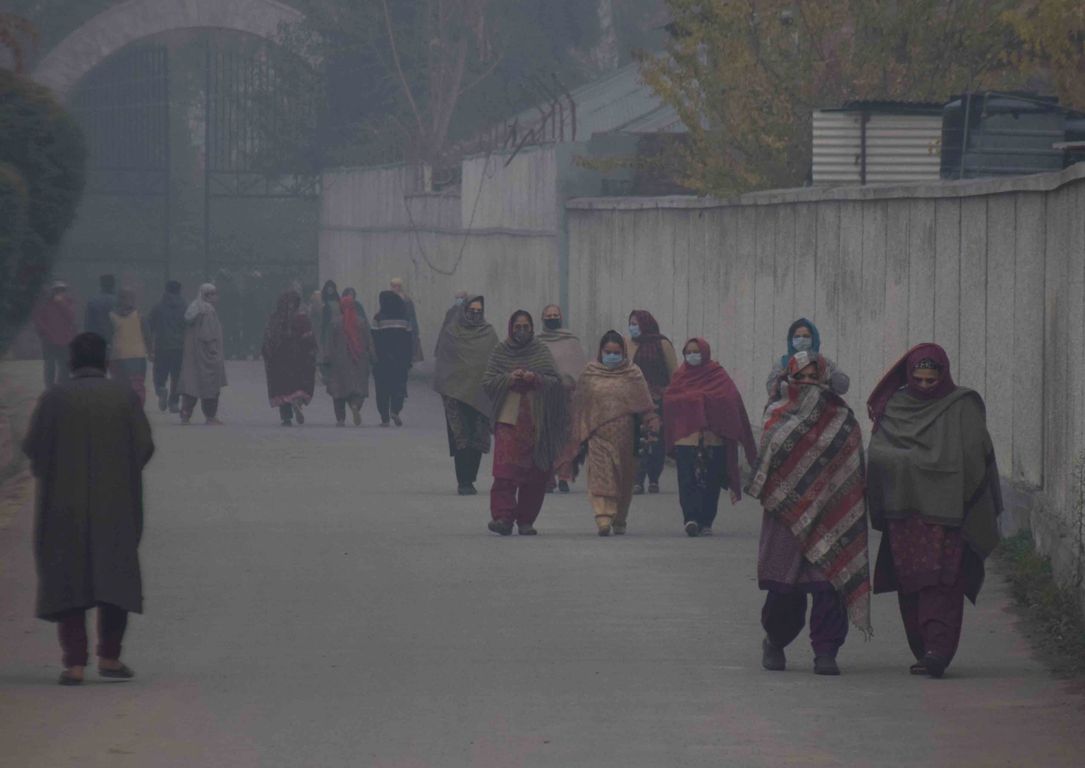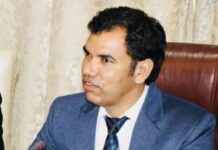by Tahir Bhat and Urvat IL Wuska
SRINAGAR: With the Sveriges Riksbank Prize in Economic Sciences in Memory of Alfred Nobel 2020 announced Monday in Sweden, all the Nobel Prize’s have been announced for 2020. The six prizes carrying 10 million Swedish kronor (Rs 8.31 crore) are given to the best laureates adjudged by a committee of a hugely experienced jury. All the awards have separate mechanisms in place.
The prizes are given in physiology and medicine, physics, Chemistry, Literature, Peace and Economics. The awards are in memory of Alfred Nobel, the discoverer of dynamite.
A total of 11 laureates shared the six prizes managed by the Royal Swedish Academy. This is in addition to the peace prizes that the UN’s World Food Programme bagged. Interestingly, seven of the 11 laureates are American, two are British and one each belongs to Germany and France. Of the 11, four are women. Chemistry prize actually went to two women.
Medicine
Announced on October 5, the Nobel Prize for medicine was awarded to three scientists who have made a decisive contribution to the fight against blood-borne hepatitis, a major global health problem that causes cirrhosis and liver cancer in people around the world.

The three scientists Harvey J Alter, Michael Houghton and Charles M Rice have made seminal discoveries that led to the identification of a novel virus, Hepatitis C virus. Prior to their work, the discovery of the Hepatitis A and B viruses had been critical steps forward, but the majority of blood-borne hepatitis cases remained unexplained. The discovery of Hepatitis C virus revealed the cause of the remaining cases of chronic hepatitis and made possible blood tests and new medicines that have saved millions of lives
Owing to their discovery, now highly sensitive blood tests for the virus are available and these have essentially eliminated post-transfusion hepatitis in many parts of the world. Their discovery also allowed the rapid development of antiviral drugs directed at hepatitis C. For the first time in history, the disease can now be cured, raising hopes of eradicating Hepatitis C virus from the world population. To achieve this goal, international efforts facilitating blood testing and making antiviral drugs available across the globe will be required. It is estimated that antibody testing has prevented at least 40,000 new infections per year in the US alone and many more worldwide.
Harvey James Alter (b 1935) is an American medical researcher virologist and physician. Michael Houghton (b 1949) is a British-born Canadian virologist. Charles Moen Rice is an American professor of virology (b 1952).
Physics
Three laureates shared the Nobel Prize 2020 in Physics for their discoveries about one of the most exotic phenomena in the universe, the black hole. Roger Penrose showed that the general theory of relativity leads to the formation of black holes. Reinhard Genzel and Andrea Ghez discovered that an invisible and extremely heavy object governs the orbits of stars at the centre of our galaxy. A supermassive black hole is the only currently known explanation.

Roger Penrose used ingenious mathematical methods in his proof that black holes are a direct consequence of Albert Einstein’s general theory of relativity. Einstein did not himself believe that black holes really exist, these super-heavyweight monsters that capture everything that enters them. Nothing can escape, not even light.
In January 1965, ten years after Einstein’s death, Roger Penrose proved that black holes really can form and described them in detail; at their heart, black holes hide a singularity in which all the known laws of nature cease. His ground-breaking article is still regarded as the most important contribution to the general theory of relativity since Einstein.
Reinhard Genzel and Andrea Ghez each lead a group of astronomers that, since the early 1990s, has focused on a region called Sagittarius A* at the centre of our galaxy. The orbits of the brightest stars closest to the middle of the Milky Way have been mapped with increasing precision. The measurements of these two groups agree, with both finding an extremely heavy, invisible object that pulls on the jumble of stars, causing them to rush around at dizzying speeds. Around four million solar masses are packed together in a region no larger than our solar system.
Using the world’s largest telescopes, Genzel and Ghez developed methods to see through the huge clouds of interstellar gas and dust to the centre of the Milky Way. Stretching the limits of technology, they refined new techniques to compensate for distortions caused by the Earth’s atmosphere, building unique instruments and committing themselves to long-term research. Their pioneering work has given us the most convincing evidence yet of a supermassive black hole at the centre of the Milky Way.
“The discoveries of this year’s Laureates have broken new ground in the study of compact and supermassive objects. But these exotic objects still pose many questions that beg for answers and motivate future research. Not only questions about their inner structure, but also questions about how to test our theory of gravity under the extreme conditions in the immediate vicinity of a black hole”, says David Haviland, chair of the Nobel Committee for Physics.
Sir Roger Penrose (b 1931) is a British mathematical physicist who has contributed enormously to general relativity and cosmology physics. Reinhard Genzel (b 1952) is a German astrophysicist. Andrea Mia Ghez (b 1965) is an American astronomer.
Chemistry
The Nobel Prize 2020 in Chemistry was jointly awarded on to Emmanuelle Charpentier and Jennifer A Doudna for their work on the development of Crispr-Cas9, a method for genome editing.

Termed to be gene technology’s sharpest tools, the laureates discovered the CRISPR/Cas9 genetic scissors. Using these, researchers can change the DNA of animals, plants and microorganisms with extremely high precision. This technology has had a revolutionary impact on the life sciences, is contributing to new cancer therapies and may make the dream of curing inherited diseases come true.
Researchers need to modify genes in cells if they are to find out about life’s inner workings. This used to be time-consuming, difficult and sometimes impossible work. Using the CRISPR/Cas9 genetic scissors, it is now possible to change the code of life over the course of a few weeks.

“There is enormous power in this genetic tool, which affects us all. It has not only revolutionised basic science but also resulted in innovative crops and will lead to ground-breaking new medical treatments,” says Claes Gustafsson, chair of the Nobel Committee for Chemistry.
As so often in science, the discovery of these genetic scissors was unexpected. During Emmanuelle Charpentier’s studies of Streptococcus pyogenes, one of the bacteria that cause the most harm to humanity, she discovered a previously unknown molecule, tracrRNA. Her work showed that tracrRNA is part of bacteria’s ancient immune system, CRISPR/Cas that disarms viruses by cleaving their DNA.
Charpentier published her discovery in 2011. The same year, she initiated a collaboration with Jennifer Doudna, an experienced biochemist with vast knowledge of RNA. Together, they succeeded in recreating the bacteria’s genetic scissors in a test tube and simplifying the scissors’ molecular components so they were easier to use.
In an epoch-making experiment, they then reprogrammed the genetic scissors. In their natural form, the scissors recognise DNA from viruses, but Charpentier and Doudna proved that they could be controlled so that they can cut any DNA molecule at a predetermined site. Where the DNA is cut it is then easy to rewrite the code of life.
Since Charpentier and Doudna discovered the CRISPR/Cas9 genetic scissors in 2012 their use has exploded. This tool has contributed to many important discoveries in basic research, and plant researchers have been able to develop crops that withstand mould, pests and drought. In medicine, clinical trials of new cancer therapies are underway, and the dream of being able to cure inherited diseases is about to come true. These genetic scissors have taken the life sciences into a new epoch and, in many ways, are bringing the greatest benefit to humankind.
Emmanuelle Marie Charpentier (b 1968) is a French microbiology professor. Jennifer Anne Doudna (b 1964) is an American biochemist.
Literature
The Nobel Prize 2020 in Literature was awarded to Louise Gluck (b 1943), one of America’s most celebrated poets for “for her unmistakable poetic voice that with austere beauty makes individual existence universal.” She is also a Pulitzer Prize winner, she becomes the 16th woman to win the Nobel Prize in Literature.

Louise Glück has published twelve collections of poetry and some volumes of essays on poetry. All are characterized by a striving for clarity. Childhood and family life, the close relationship with parents and siblings, is a thematic that has remained central with her. In her poems, the self listens for what is left of its dreams and delusions, and nobody can be harder than she in confronting the illusions of the self. Her work is known for its emotional intensity and for frequently drawing on myth, history, or nature to meditate on personal experiences and modern life.
Glück has focused on illuminating aspects of trauma, desire, and nature. In exploring these broad themes, her poetry has become known for its frank expressions of sadness and isolation.
Peace
The Nobel Peace Prize was awarded to the World Food Program for its efforts to combat hunger, for its contribution to bettering conditions for peace in conflict-affected areas and for acting as a driving force in efforts to prevent the use of hunger as a weapon of war and conflict.
The World Food Programme is a United Nations subsidiary that is the world’s largest humanitarian organization focused on hunger and food security and operates in 80 countries since 1961. It provides food assistance to an average of 91.4 million people in 83 countries each year. As of 2019, its reach increased to 97 million people in 88 countries, the largest since 2012, and two-thirds of its activities are conducted in conflict zones.
As the Coronavirus pandemic has contributed to a strong upsurge in the number of victims of hunger in the world. In countries such as Yemen, the Democratic Republic of Congo, Nigeria, South Sudan and Burkina Faso, the combination of violent conflict and the pandemic has led to a dramatic rise in the number of people living on the brink of starvation. In the face of the pandemic, the World Food Programme has demonstrated an impressive ability to intensify its efforts.
Economic Science
The last of the six prestigious prizes was given to laureates, Paul Milgrom and Robert Wilson for studying how the auctions work. They have also used their insights to design new auction formats for goods and services that are difficult to sell in a traditional way, such as radio frequencies. Their discoveries have benefitted sellers, buyers and taxpayers around the world.

People have always sold things to the highest bidder or bought them from whoever makes the cheapest offer. Nowadays, objects worth astronomical sums of money change hands every day in auctions, not only household objects, art and antiquities, but also securities, minerals and energy. Public procurements can also be conducted as auctions.
Using auction theory, researchers try to understand the outcomes of different rules for bidding and final prices, the auction format. The analysis is difficult, because bidders behave strategically, based on the available information. They take into consideration both what they know themselves and what they believe other bidders to know.
Robert Wilson developed the theory for auctions of objects with a common value – a value which is uncertain beforehand but, in the end, is the same for everyone. Examples include the future value of radio frequencies or the volume of minerals in a particular area. Wilson showed why rational bidders tend to place bids below their own best estimate of the common value: they are worried about the winner’s curse – that is, about paying too much and losing out.
Paul Milgrom formulated a more general theory of auctions that not only allows common values, but also private values that vary from bidder to bidder. He analysed the bidding strategies in a number of well-known auction formats, demonstrating that a format will give the seller higher expected revenue when bidders learn more about each other’s estimated values during bidding.
Over time, societies have allocated ever more complex objects among users, such as landing slots and radio frequencies. In response, Milgrom and Wilson invented new formats for auctioning off many interrelated objects simultaneously, on behalf of a seller motivated by broad societal benefit rather than maximal revenue. In 1994, the US authorities first used one of their auction formats to sell radio frequencies to telecom operators. Since then, many other countries have followed suit.
“This year’s Laureates in Economic Sciences started out with a fundamental theory and later used their results in practical applications, which have spread globally. Their discoveries are of great benefit to society,” says Peter Fredriksson, chair of the Prize Committee.
Milgrom (b 1948) and Wilson (b 1937) are both American professors.















